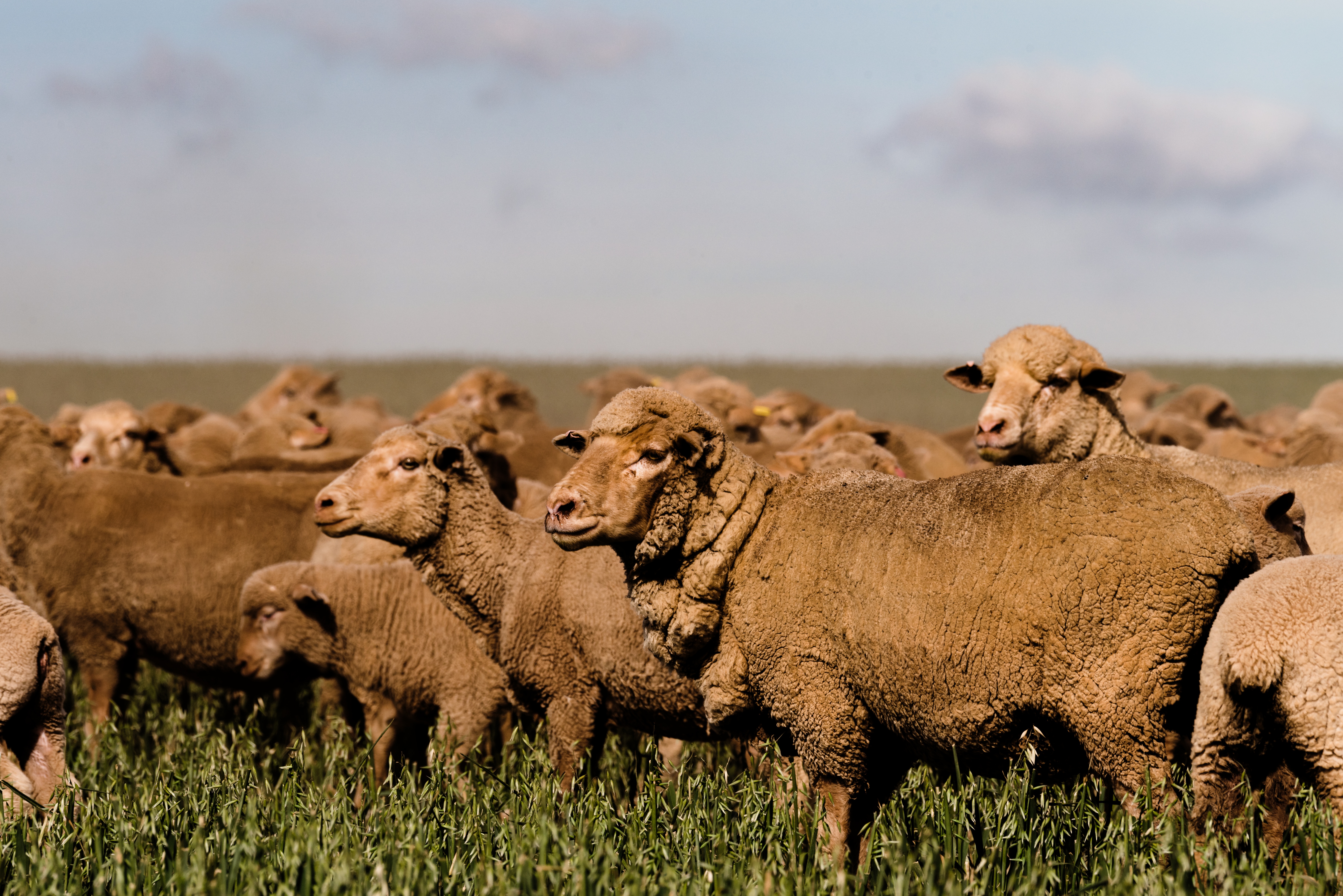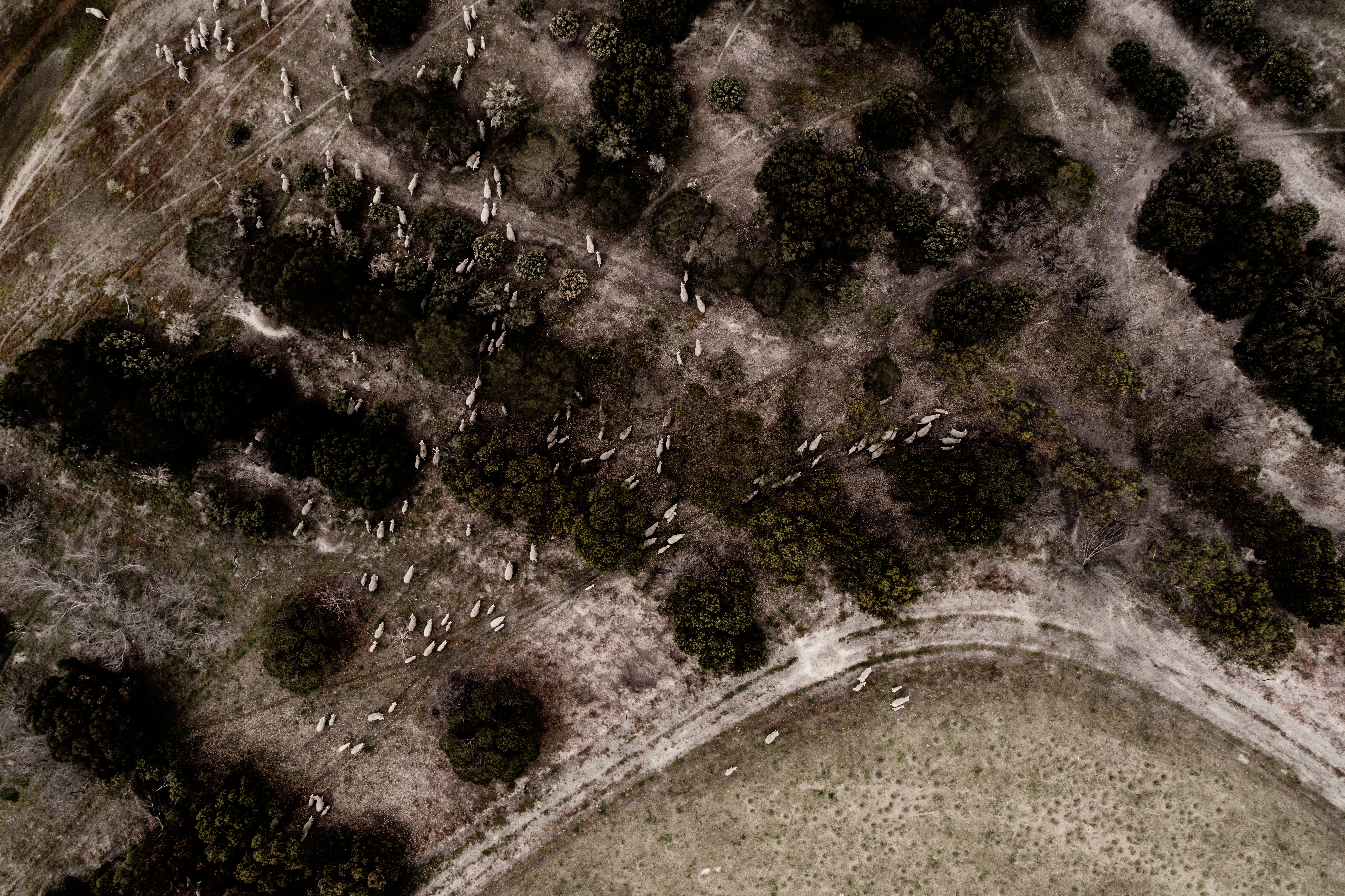Recognising and preventing metabolic disease in lambing ewes

Optimising ewe nutrition during pregnancy and lactation is critical for the health, productivity and survival of ewes and their lambs. This article covers risk factors, what to look for, and how to prevent and treat two of the common metabolic disorders seen in pregnant and lactating ewes – pregnancy toxaemia and hypocalcemia.
Optimising ewe nutrition during pregnancy and lactation is critical for the health, productivity and survival of ewes and their lambs. There is an increased risk of metabolic disorders in the last 6 weeks of pregnancy and early lactation, when the nutritional demands of the ewe are highest. This article covers risk factors, what to look for, and how to prevent and treat two of the common metabolic disorders seen in pregnant and lactating ewes – pregnancy toxaemia and hypocalcaemia.
Pregnancy toxaemia
The last two months of pregnancy represent a period of high energy demand for ewes, as 70% of lamb growth occurs during this time. If the energy demands of the ewe exceed those coming from feed, she will mobilise her own body reserves of fat and muscle to meet the deficit. The conversion of fat into energy results in the production of ketones. The larger the energy deficit, the more fat mobilised and the more ketones produced. Ketones become toxic over a prolonged period of undernutrition, resulting in a further reduction in feed intake by the ewe and the development of clinical signs of pregnancy toxaemia. The incidence of the disorder may typically be between 1-2% and up to 10% of twin-bearing ewes. Many ewes can be affected at one time. Once ewes ‘go down’ or when the disease triggers act slowly, there are limited treatment options. Hence, prevention is key.
What are the risk factors and triggers for pregnancy toxaemia?
- Late pregnant ewes, especially those carrying multiples, are associated with high energy demands coupled with decreased rumen capacity of the ewe due to foetal growth
- Early-lambing flocks when there is a late break and stubbles/dry feed have deteriorated
- A sudden change in feed, e.g., flush of young, green pasture
- Ewes that are in poor condition or are over-fat
- Concurrent disease that reduces appetite quickly or over time, e.g., infection, lameness or hypocalcaemia
- Short periods of fasting, such as yarding, mustering, trucking, shearing or other stressors, such as extreme weather conditions. These events alone may not cause pregnancy toxaemia but can result in the disorder when accompanied by prolonged undernutrition.
- Ewes with a broken mouth
Autumn represents a risk period for pregnancy toxaemia due to limited dry feed and increasing energy requirements of ewes, so now is the time to keep an eye out for affected ewes.
What are the signs of pregnancy toxaemia?
Ewes with pregnancy toxaemia may be separated from the mob, have muscle weakness and stagger or lie down. They may be drowsy or comatose, not eating or have nervous system symptoms such as trembling or apparent blindness. Ewes may lie on their side for 3 to 4 days and then die 3 to 4 days later.
How to prevent pregnancy toxaemia:
- Manage ewes to meet condition score targets during pregnancy and lactation – see Making More From Sheep Tool 10.4 - Recommended condition score targets for ewes
- The most economical way of meeting condition score targets is to match the peak energy demands of your sheep with peak pasture availability - see Making More From Sheep Chapter 8.3 - Match animal demand to feed supply and minimise risk
- Pregnancy scan ewes for multiples and differentially manage single- and twin-bearing ewes to meet their condition score targets during pregnancy and lactation, and feed-on-offer targets at lambing (1300 kg DM/ha for single-bearing ewes and 1800 kg DM/ha for twin-bearing ewes, assuming green feed is high-quality with 75% digestibility)
- Handle ewes using low-stress stock handling techniques and avoid handling in the last month of pregnancy
- Minimise other disease risks
How to treat ewes with pregnancy toxaemia:
Seek immediate professional advice to rule out hypocalcaemia because the symptoms of pregnancy toxaemia and hypocalcaemia are similar, and there is limited opportunity to successfully treat either disease.
Treatments include:
- Glucose or dextrose injection or drench, or a balanced rehydration drench for a rapid energy boost
- Glycerine glycol drench for prolonged energy
Ewes typically need to be treated with multiple energy drenches. Dehydration is a significant feature of pregnancy toxaemia, so ensure ewes have access to water. If ewes are depressed, drench them with water and electrolytes.
Hypocalcaemia (a.k.a. ‘milk fever’)
Blood concentrations of calcium are normally maintained through the mobilisation of calcium from bone and the absorption of dietary calcium from the gut. Hypocalcaemia is a deficiency of calcium in the bloodstream caused by the animal being unable to mobilise calcium from the bone quickly enough to maintain normal blood levels. It can also occur when oxalates, which are compounds naturally found in plants, bind up the calcium in the blood. Hypocalcaemia causes muscles to not contract properly, including those of the heart, gut and legs.
Ewes in their last six weeks of pregnancy and first month of lactation are most at risk as during this time the ewe is providing calcium for bone development in the foetus and milk production.
Hypomagnesaemia (a.k.a. grass tetany) is a deficiency of magnesium in the bloodstream and is often seen in conjunction with hypocalcaemia.
What are the risk factors and triggers for hypocalcaemia?
- Late pregnancy or lactation, when calcium demands are high
- Older ewes are more susceptible because their bone reserves of calcium are more likely to be depleted
- Stress or limited access to feed such as mustering, yarding, trucking, shearing, crutching or extreme weather events
- Concurrent disease that reduces feed intake, such as infection or lameness
- Feeds with a high phosphorus to calcium ratio, young flush of pasture, rapidly growing cereal crops, high grain diets or sudden changes in feed
- Grazing paddocks with weeds containing oxalates, such as goosefoot/mintweed, fat hen, pigweed, soursob, sorrel, dock or doublegee
Hypocalcaemia is not confined to pregnant/lactating ewes and may be seen in sheep in good condition when stressed or exposed to other risk factors.
What are the signs of hypocalcaemia?
Hypocalcaemia has a rapid onset, with affected sheep having a stiff, uncoordinated gait, muscle trembling and weakness. Ewes will sit down on their brisket with their head towards their flank, unable to get up, and die within 24 hours.
How to prevent hypocalcaemia:
- Test paddock and supplementary feeds for their calcium to phosphorus (Ca:P) ratio and ensure a balance of 2:1
- Avoid sudden changes in feed
- Limit time off feed
- Handle ewes using low-stress stock handling techniques and avoid handling in the last month of pregnancy
- Use calcium supplements with ewes (and weaners) to buffer against the disease if the diet is low in calcium. Often loose licks with equal parts of salt, limestone/Ca and magnesium (Mg) are used, particularly when grazing vegetative crops
- Have an injectable solution of calcium and magnesium on hand during lambing
- Seek professional advice if you’re seeing a high rate of disease on improved pastures or when grazing crops
How to treat sheep with hypocalcaemia:
Seek immediately professional advice to rule out pregnancy toxaemia. Promptly treat sheep for both hypocalcaemia and pregnancy toxaemia if you’re unable to get timely advice.
Hypocalcaemia is often seen in conjunction with hypomagnesaemia, so injection with a combined solution of calcium (calcium borogluconate) and magnesium under the skin is recommended. Sheep should respond within a few minutes with burping, muscle tremors and voluntary movements and should fully recover within an hour. Treatment can be repeated every 4 to 6 hours if the sheep don’t make a full recovery.
Seek professional advice if sheep haven’t responded within 30 minutes of treatment.
Summary
|
|
Pregnancy toxaemia |
Hypocalcaemia |
|
Cause |
Low glucose levels in the blood |
Low calcium levels in the blood |
|
Risk factors |
• Late pregnancy, especially if multiple-bearing •Early-lambing flocks when there is a late break and stubbles/dry feed have deteriorated •A sudden change in feed, e.g., flush of young, green pasture •Ewes that are in poor condition or are over-fat •Concurrent disease that reduces appetite quickly or over time •Short periods of fasting, such as yarding, mustering, trucking, shearing or other stressors, such as extreme weather conditions •Ewes with a broken mouth |
• Late pregnancy and first month of lactation •Older age •Feeds with a high phosphorus to calcium ratio, young pasture flush, rapidly growing cereal crops, high grain diets, sudden changes in feed •Grazing paddocks with weeds containing oxalates, such as goosefoot/mintweed, fat hen, pigweed, soursob, sorrel, dock or doublegee •Concurrent disease that reduces feed intake •Stress or limited access to feed such as mustering, yarding, trucking, shearing, crutching or extreme weather events |
|
Symptoms |
• Gradual onset •May be separated from the mob •Unresponsive when approached •Muscle weakness and staggering or lying down •Drowsy or comatose •Not eating •Trembling or apparent blindness •Lie on their side for 3 to 4 days and then die 3 to 4 days later |
• Sudden onset •Move or struggle when approached •Sheep appear alert but may stagger or convulse •Stiff, uncoordinated gait •Muscle trembling and weakness •Sit down on their brisket with their head towards their flank, unable to get up •Die within 24 hours |
|
Prevention |
• Good nutrition •Differential management of single- and twin-bearing ewes to meet condition score and feed-on-offer targets •Avoid sudden changes in feed •Avoid sudden periods of fasting •Handle ewes using low-stress stock handling techniques and avoid handling in the last month of pregnancy •Minimise other disease risks |
• Ensure a Ca:P ratio in the diet of 2:1 •Avoid grazing weeds containing oxalates •Avoid sudden changes in feed •Limit time off feed •Handle ewes using low-stress stock handling techniques and avoid handling in the last month of pregnancy •Use calcium supplements to buffer against the disease if the diet is low in calcium |
|
Treatment |
• Glucose or dextrose injection or drench, or a balanced rehydration drench for a rapid energy boost •Glycerine glycol drench for prolonged energy •Variable response to treatment |
• Calcium (calcium borogluconate) and magnesium solution injected under the skin •Good response to prompt treatment |
Source: Department of Primary Industries and Regional Development, and Primary Industries and Regions SA
Sources
Fact sheets
- Pregnancy toxaemia and hypocalcaemia – Making More From Sheep
- Pregnancy toxaemia and hypocalcaemia – DPIRD
- Pregnancy toxaemia – DPI NSW
- Calcium and magnesium deficiencies in pregnant and lactating ewes – AWI
Other
Sheep diseases - the farmer's guide, PIRSA
Amy Lockwood, AWI Extension WA






.jpg/Zz0zNDRlNmZlMjBlYmMxMWYwOTk5YzVlMmQ3Njg2YmYwZg==)
.png/Zz0yM2JiZjM5ODBlYmMxMWYwOTU5YTYyNTc0YTA0ZjBjZQ==)
